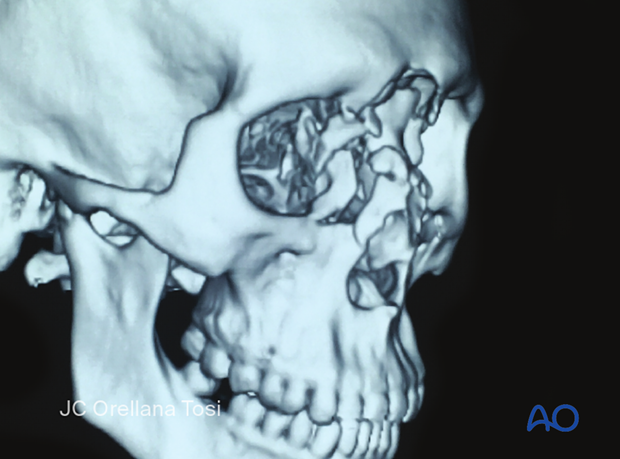NOE Type II fracture
Definition
There is often comminution of the NOE area in unilateral type II fractures, but the canthal tendon remains attached to a sizeable bone fragment, allowing the canthus to be stabilized with wires or a small plate on the canthal-bearing fractured segment.
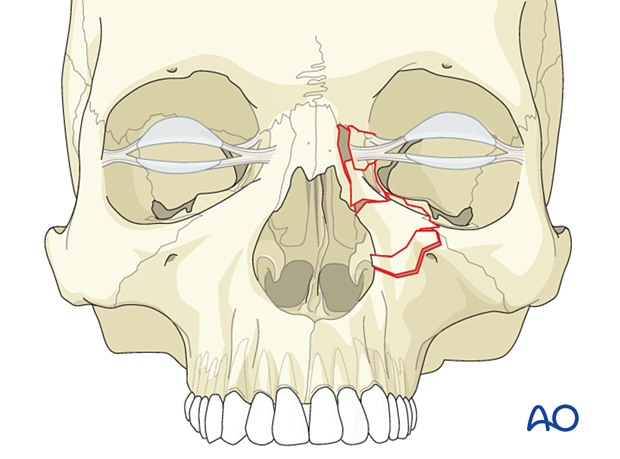
Involvement of the nasal bone
The nasal bone is also involved. In cases of comminution, it may not provide adequate dorsal support to the nasal bridge.
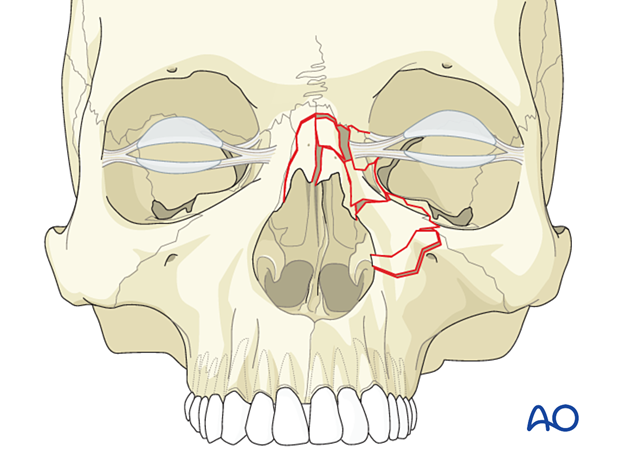
Bilateral type II fracture with nasal bone involvement
The illustration shows a bilateral NOE type II fracture. In bilateral fractures, the nasal bones are always involved. In some instances, bone grafting of the nasal dorsum may be necessary.
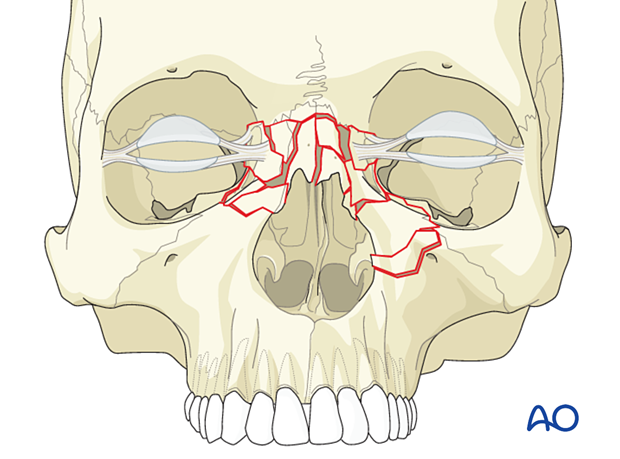
General
The nasoorbitoethmoid (NOE) fracture refers to injuries involving the area of confluence of the nose, orbit, ethmoids, the base of the frontal sinus, and the floor of the anterior cranial base. The area includes the insertion of the medial canthal tendon(s). NOE fractures, by definition, are a different entity to isolated nasal bone fractures. However, they are often associated with fractures of the nasal bones.
NOE fractures are most commonly classified as:
- Type I
- Type II
- Type III
These can be unilateral or bilateral injuries.
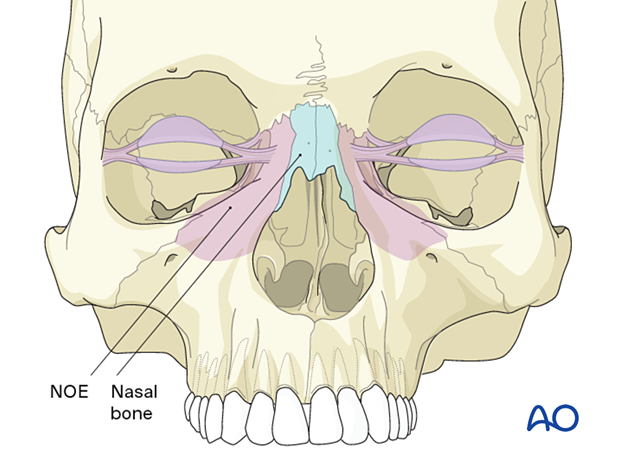
Involvement of buttresses
NOE complex fractures involve the medial vertical (nasomaxillary) buttresses of the facial skeleton. Click here for further details on facial buttresses.
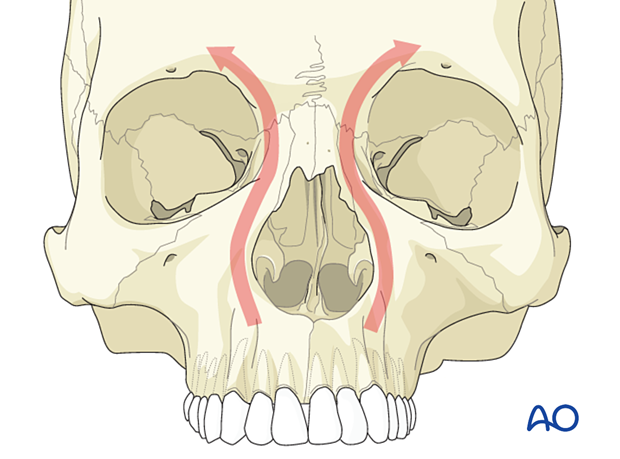
Association with frontal sinus fractures
NOE fractures are often associated with frontal sinus fractures.
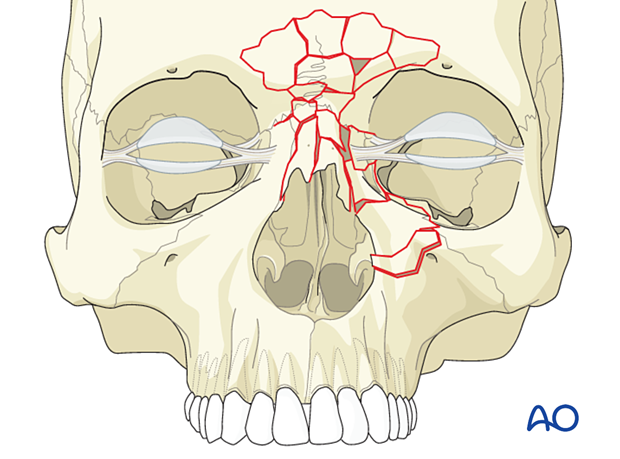
Radiographic findings
This 3D CT scan shows a bilateral type II NOE fracture with comminution. The medial canthal ligaments are still attached to substantial bone segments.
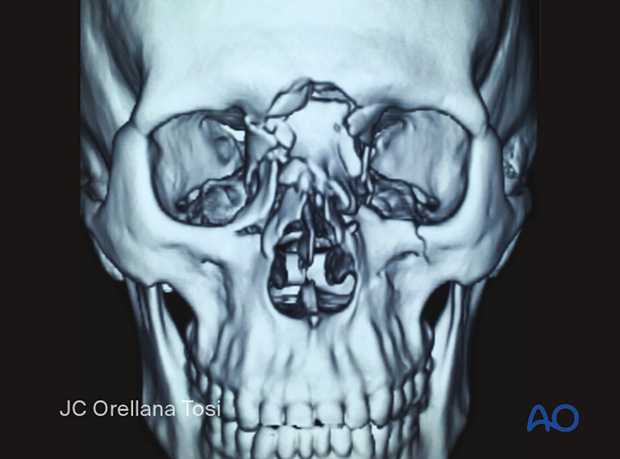
Note the comminution and the involvement of the nasal bones.
